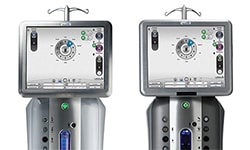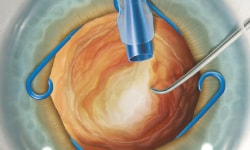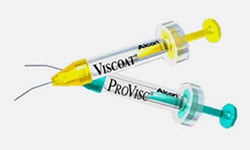Editorially Independent Content
HEALON Ophthalmic Viscoelastic Devices (Abbott Medical Optics) help maintain a deep anterior chamber during ophthalmic surgeries such as cataract procedures. The product family includes: HEALON OVD, HEALON5 OVD, HEALONGV and HEALON EndoCoat OVD. Each has a very distinctive characteristic, making it well suited to specific parts of a cataract surgery procedure. They facilitate manipulation inside the eye with reduced trauma to the corneal endothelium and to other ocular tissues.
While I’ve tried other OVDs, I prefer the HEALON family of OVDs and have been using it for a very long time at Matossian Eye Associates. My practice is exclusively cataract surgery and I use HEALON OVDs, including HEALON regular, HEALON5 and HEALON EndoCoat, for all my cataract surgeries.
FACILITATES SURGICAL PROCESS
At the start of surgery, I use HEALON5 to flatten the dome of the cataract to do a more precise capsulorhexis. Since I still do a manual capsulorhexis, it’s much easier to have control over the capsulorhexis if you are not doing it on the slope of the cataract. Flattening it with the HEALON5 in my hands gives me much better control; decreases the risk of it spiraling out to the equator; and maintains the size of the capsulorhexis more precisely.
TRICKS OF THE TRADE
I use HEALON regular for intraocular lens implantation. Since HEALON5 has a much higher molecular weight, I found that it’s harder for the haptics of the implant to open up against the resistance of the HEALON5. It’s very easy to get the HEALON out with routine IA. If need be, I just tap on the optic of the implant or go underneath it and it readily comes out. By using HEALON regular, I avoid the risk of leaving HEALON5 in the eye, which could cause an intraocular pressure rise postoperatively.
In patients with corneal endothelial issues, such as pre-existing corneal endothelial dystrophies or Fuchs corneal dystrophies, I use the Endocoat, which adheres to the corneal endothelium to protect the cornea during cataract surgery.
VISCO-ADAPTABILITY
I chose HEALON5 because of its amazing visco-adaptive capabilities. It’s easy to put in, you don’t have bubbles and it’s very clear. Because of its high molecular weight, it actually manipulates tissues. For me, it’s like having a third instrument in the eye. I use Healon5 to create a space between the iris and the anterior capsule in order to help the scrolls of the Malyugin ring easily slip around the pupillary margin; I also use Healon5 to visco-dissect or visco-cleave segments of a cataract that require additional manipulation.
POTENTIAL CHALLENGE
Unlike other OVDs, the surgeon has to take the time to learn how to remove the HEALON5. If you use it to fill the bag for IOL insertion, you have to compartmentalize the HEALON5 above and below the implant to ensure complete removal. Then, using a rock and roll technique, you rock up the optic, get all the HEALON5 out, then tap the implant down and remove the HEALON5 that’s on top of the optic.
If you’re using HEALON rather than Healon5 for intraocular lens implantation, then this OVD will easily come out with routine I&A without the rock and roll maneuver.
GREATER CONFIDENCE
What HEALON5 has added to my practice is confidence that I can get through cataract surgeries, especially really challenging cases. Surgeons shouldn’t be intimidated by HEALON5. Work with your AMO Rep. They’ll teach you how to maneuver it, and it will soon become your best friend in the OR.
From the HEALON family of OVDs, you can personalize the exact OVD you need for each step of the cataract surgery procedure depending on the situations you encounter.




